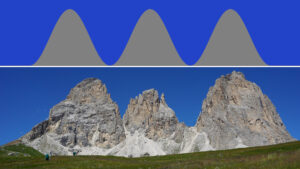Abstract/Description
In recent years, the need to assess the quantity and quality of water resources around the world has gained a prominent role in the scientific community, because due to climate change, the amount of available water resources has impacts on the development of human, ecological, and industrial activities. It is in this regard that this dissertation can play an important role, as snow is one of the forms in which water can be stored, especially during the winter season. Its subsequent melting, mainly occurring in spring and summer, is responsible for the release of water, and thus influences water supply, agriculture, and hydroelectric energy production, amongst others.
The focus of this dissertation and related papers is therefore the analysis of the recent evolution of the snow cover characteristics (e.g. depth, snow water equivalent, etc.) in mountainous areas of the Earth, through different data sources and methods, and its relationship with temperature and precipitation changes. So far, various studies have tried to understand the relationship between snow depth changes and global warming, based on in-situ measured data, reanalysis data or satellite data, but generally with spatial limitations, e.g. to a specific region or hemisphere. It is therefore appropriate to extend the scope of previous studies by conducting a uniform analysis of the available snow cover observations in mountainous regions around the world. This should allow to identify and compare trends in snow depth, snow cover duration, etc. at a global picture, to find out which regions are experiencing the most significant changes and how these impact local runoff and water resources, which in their turn can impact local environment, population and activities.


